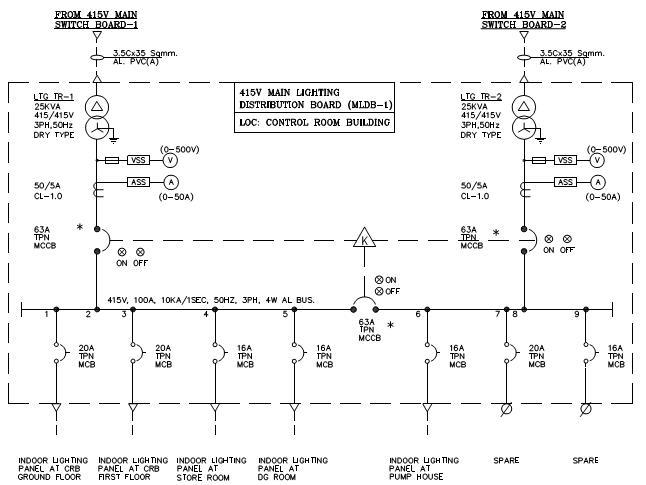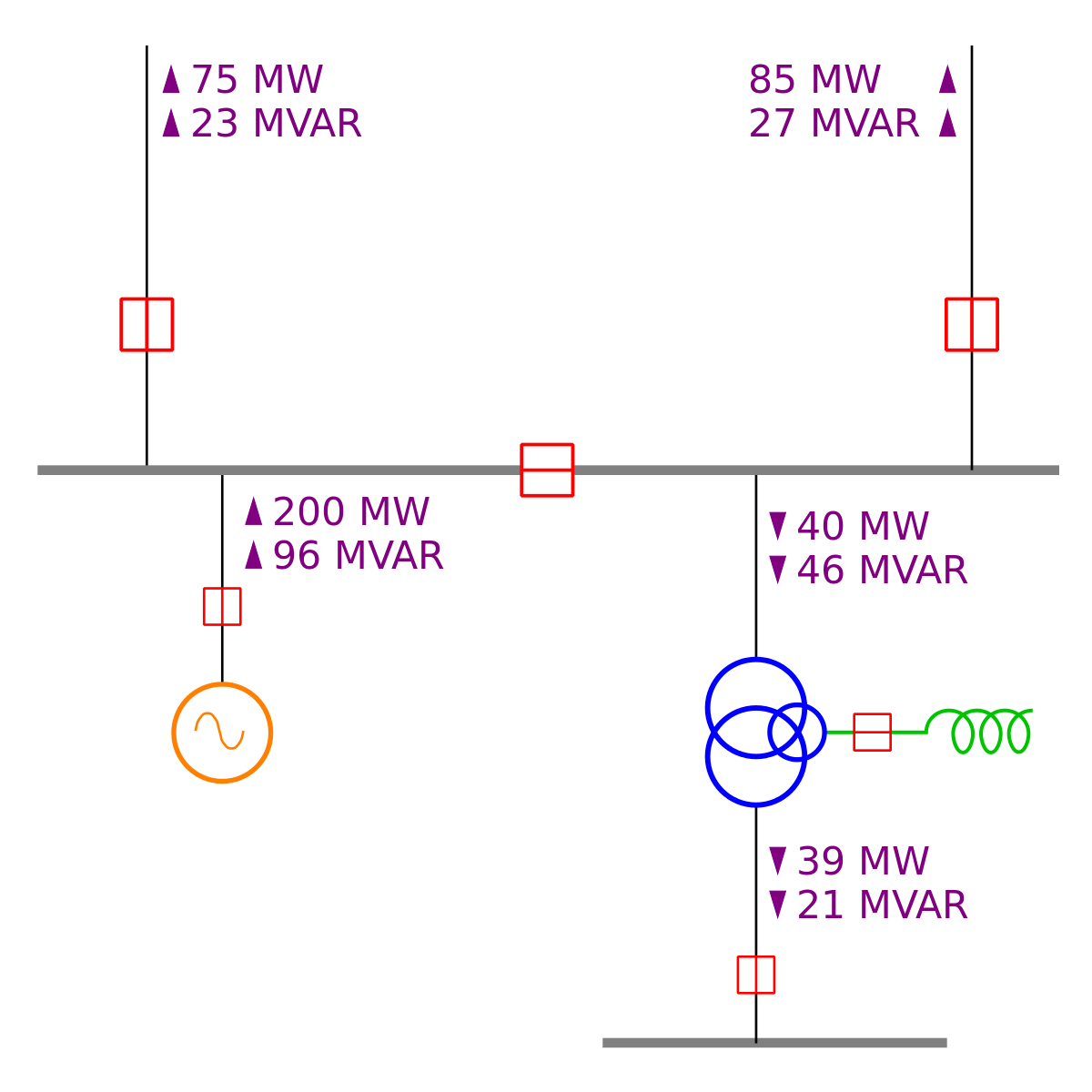

- #EXAMPLE OF SINGLE LINE DIAGRAM HOW TO#
- #EXAMPLE OF SINGLE LINE DIAGRAM GENERATOR#
- #EXAMPLE OF SINGLE LINE DIAGRAM FULL#
- #EXAMPLE OF SINGLE LINE DIAGRAM SERIES#
How to read a single line diagram is also discussed. This posts elaborated the use and application of single line diagram in power systems. This type of SLD is used for calculation of fault current and setting and coordination of the relays. Dashed lines between the relays and the breakers indicate a functional relationship in this case operation of overcurrent relays causes the associated breaker to trip.

The current transformers are connected to overcurrent relays. There are current transformers on the supply end of each breaker. The outgoing lines have breakers only on the supply end. The buses represent two distribution stations. The variations in symbols are usually minor and are not difficult toįigure 5 – Single Line Diagram of Overcurrent Protection of a Radial Systemįigure 5 shows a radial system of two lines.

However, if the purpose is to design a protection scheme for the equipment in the substation, then instrument transformers and relays are also included. There is no need to include instrument transformers or protection and metering devices. For example, if the SLD is used in the initial stages of designing a substation, then all major equipment will be included in the diagram – major equipment being transformers, breakers, disconnects and the buses. The amount of information included in an SLD depends on the purpose for which the diagram is used. They show the relative electrical interconnections of generators, transformers, transmission and distribution lines, loads, circuit breakers, etc., used in assembling the power system. As the name suggests, SLDs use a single line to represent all three phases. Single Line Diagrams do not show the exact electrical connections of the circuits. The values of impedances and reactances in the impedance and reactance are found from the data given in single line diagram. Since the impedance and reactance diagrams show impedances to balanced currents in a symmetrical three-phase system, they are sometimes called the positive-sequence diagrams. These simplifications are applicable to fault calculations only and not to load-flow studies. If all static loads, all resistances, the shunt admittance of each transformer, and the capacitance of the transmission line are neglected in order to simplify the calculation of the fault current, the impedance diagram reduces to the reactance diagram. Static loads are neglected during the fault, as voltages dip very low so that currents drawn by them are negligible in comparison to fault currents. Induction motors are omitted in computing the current a few cycles after the occurrence of the fault because the current contributed by an induction motor dies out very quickly after the induction motor gets short-circuited.
#EXAMPLE OF SINGLE LINE DIAGRAM SERIES#
If the impedance diagram is to be used to determine the current immediately after the occurrence of a fault, the induction motors are taken into account by a generated emf in series with an inductive reactance. Since the generated ems of synchronous motor loads contribute to the fault current, they are always included in making fault calculations. Static loads (i.e., the loads which do not involve rotating machines) have little effect on the total line current during a fault and are usually omitted. Since the resistance of a syste is very small as compared to its inductive reactance, the resistance is often omitted when making fault calculations.
#EXAMPLE OF SINGLE LINE DIAGRAM FULL#
The shunt admittance is usually omitted in the equivalent circuit of the transformer because the magnetizing current of a transformer is usually insignificant compared with the full load current. Medium and long lines are represented by nominal PI circuits, whereas very long lines are represented by equivalent PI circuits. A short line is represented by its series impedance. Transformers and motors are represented by their equivalent circuits.
#EXAMPLE OF SINGLE LINE DIAGRAM GENERATOR#
Representation of Power System Components on the Single Line DiagramĪ generator is represented by an emf in series with an impedance. The equivalent circuit of the system drawn by combining the equivalent circuits for the various components shown in the one-line diagram is known as the impedance diagram of the system. In order to analyze a power system under load conditions or upon the occurrence of a fault, it is essential to draw the per-phase equivalent circuit of the system by using its one-line diagram. Three phases are denoted by a single conductor i.e., power system is assumed in a balanced steady state.


 0 kommentar(er)
0 kommentar(er)
